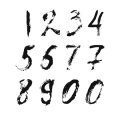Introduction to Heavenly Stems and Earthly Branches
If you’ve ever been curious about the cycles and systems that shape traditional Chinese culture, the concepts of Heavenly Stems (Tiangan) and Earthly Branches (Dizhi) are fascinating entry points. These two sets of symbols, rooted in ancient China, have been used for thousands of years as a means to mark time, organize calendars, and even interpret personality traits or fortunes. The ten Heavenly Stems and twelve Earthly Branches combine in a repeating 60-unit cycle that forms the backbone of the Chinese calendar—a system still referenced in East Asian societies today.
For learners in the United States, understanding these symbols isn’t just about mastering an interesting piece of trivia. As American classrooms, workplaces, and communities grow more diverse, cross-cultural competence is increasingly valuable. By learning how the Heavenly Stems and Earthly Branches work—how they relate to years, months, days, and hours—you not only gain insight into Chinese history and philosophy but also build bridges for communication with those who share this heritage. Whether you’re studying language, exploring your own roots, or engaging with international business partners, knowing these foundational elements can open new doors.
2. Breaking Down the System: Structure and Meaning
The Heavenly Stems (天干, Tiāngān) and Earthly Branches (地支, Dìzhī) system is foundational in Chinese metaphysics, yet its structure can be demystified with clear analogies and systematic breakdowns. To start, think of the ten Heavenly Stems as similar to the Western concept of elements or suits in a deck of cards—they are fundamental building blocks. The twelve Earthly Branches function much like the months of the year or hours on a clock, representing cyclical time and phases.
The Ten Heavenly Stems
The Heavenly Stems are: Jia (甲), Yi (乙), Bing (丙), Ding (丁), Wu (戊), Ji (己), Geng (庚), Xin (辛), Ren (壬), and Gui (癸). They alternate between Yang and Yin and are mapped onto five elements—Wood, Fire, Earth, Metal, Water—each element having both a Yang and Yin aspect. Here’s a table for clarity:
| Stem | Element | Yin/Yang | Western Analogy |
|---|---|---|---|
| Jia | Wood | Yang | Ace of Clubs (Initiation) |
| Yi | Wood | Yin | Two of Clubs (Growth) |
| Bing | Fire | Yang | Ace of Hearts (Spark) |
| Ding | Fire | Yin | Two of Hearts (Nurturing warmth) |
| Wu | Earth | Yang | Ace of Diamonds (Stability) |
| Ji | Earth | Yin | Two of Diamonds (Support) |
| Geng | Metal | Yang | Ace of Spades (Strength) |
| Xin | Metal | Yin | Two of Spades (Refinement) |
| Ren | Water | Yang | Ace of Clubs reversed (Flow/Force) |
| Gui | Water | Yin | Two of Clubs reversed (Gentle flow) |
The Twelve Earthly Branches
The Earthly Branches are associated with animals from the familiar Chinese zodiac: Zi (Rat), Chou (Ox), Yin (Tiger), Mao (Rabbit), Chen (Dragon), Si (Snake), Wu (Horse), Wei (Goat), Shen (Monkey), You (Rooster), Xu (Dog), Hai (Pig). In Western terms, imagine them as the twelve months or zodiac signs, each marking a specific phase in a repeating cycle.
| Branch | Zodiac Animal | Cyclical Role | Western Analogy | |||||||||||||||||||
|---|---|---|---|---|---|---|---|---|---|---|---|---|---|---|---|---|---|---|---|---|---|---|
| Zi | Rat | Budding/New Start | January/Capricorn | |||||||||||||||||||
| Chou | Ox | Nourishing/Plowing | February/Aquarius | |||||||||||||||||||
| Yin | Tiger | Shooting Up/Growth | March/Pisces | |||||||||||||||||||
| Mao | Rabbit | Sustaining/Energy rising | April/Aries | |||||||||||||||||||
| Chen | Dragon | Emergence/Transformation | May/Taurus | |||||||||||||||||||
| Si | Snake | Warming/Maturity onset | June/Gemini | |||||||||||||||||||
| Wu | Horse | Peak Energy/Expansion | July/Cancer | |||||||||||||||||||
| Wei | Goat | Transition/Sustenance | August/Leo | |||||||||||||||||||
| Shen | Monkey | Ripening/Flexibility | September/Virgo | |||||||||||||||||||
| You | Rooster | Harvest/Assessment | October/Libra | |||||||||||||||||||
| Xu | Dog | Guarding/Storage | November/Scorpio < / tr > | |||||||||||||||||||
| Hai |
| Event/Context | Heavenly Stem or Earthly Branch Reference | How to Spot It |
|---|---|---|
| Chinese Zodiac Years (e.g., Year of the Dragon) | Earthly Branches | Look for animal signs on calendars, festival flyers, or restaurant menus. |
| Lunar New Year Celebrations | Both Stems & Branches | Check event programs that mention “Jia Zi” cycles or zodiac pairings. |
| Horoscopes in Asian-American Magazines | Stems & Branches Combined | Read horoscopes mentioning “wood tiger” or “metal rat”—these are stem-branch combinations! |
Pop Culture: Movies, TV Shows, and Beyond
The influence of Heavenly Stems and Earthly Branches occasionally pops up in American pop culture. For example, martial arts movies may reference a character’s birth year using the animal sign (Earthly Branch), while some video games incorporate elemental cycles (Heavenly Stems) as part of gameplay mechanics. If you’re watching a movie set in Chinatown or reading a graphic novel with Chinese-American protagonists, pay attention to any references to birth years, lucky animals, or elemental attributes.
Example Exercise: Spotting References in Pop Culture
- TV Dramas: Notice characters celebrating “Year of the Rabbit” or discussing their luck based on their zodiac animal.
- Video Games: Identify power-ups or levels named after elements like wood, fire, earth, metal, and water.
- Comics: Look for storylines featuring twelve animal warriors—each one represents an Earthly Branch!
Causal Conversations: Bringing It Up Naturally
You don’t have to wait for a formal lesson to reinforce your knowledge. Try these strategies in everyday interactions:
- If someone mentions their birth year during a conversation about astrology or horoscopes, try connecting it to its corresponding Chinese zodiac animal.
- During Lunar New Year festivities at school or work, ask colleagues if they know which element their birth year falls under—this can spark engaging discussions about Heavenly Stems.
- At multicultural events, challenge yourself to identify decorations or symbols that correspond with specific stems or branches.
Quick Reference Table: Common U.S. Contexts for Stems & Branches
| Setting | You Might See… |
|---|---|
| Lunar New Year Parade | Zodiac animal floats (Branches), banners with elemental motifs (Stems) |
| Sushi Restaurants/Asian Markets | Zodiac placemats or posters showing animals and elements |
| Cultural Festivals/Fairs | Cycling through 12 animals in performances or displays; mention of 60-year cycles in speeches |
| Bilingual School Programs | Lesson plans featuring both Gregorian dates and stem-branch years side by side |
This pattern recognition not only helps cement your memory but also bridges cultural understanding—making the Heavenly Stems and Earthly Branches a living part of your experience in America.
5. Hands-On Practice: Worksheets and Memory Games
When it comes to mastering the Heavenly Stems and Earthly Branches, nothing beats hands-on practice. Interactive tools and practical exercises are especially effective for English speakers, who may be less familiar with these ancient concepts. To make your learning journey engaging and efficient, we recommend a blend of printable worksheets and digital memory games specifically designed for Western learners.
Interactive Tools for Active Learning
Interactive learning platforms offer immediate feedback, keeping you motivated as you practice matching symbols, pronunciations, and meanings. Many online resources now feature drag-and-drop activities, flashcard generators, and timed quizzes that challenge your recall speed—crucial for long-term retention.
Printable Worksheets: Structured and Portable
Printable worksheets provide a tactile way to reinforce memorization. Look for templates that let you fill in blank tables, match pairs, or draw connections between the Stems (like Jia 甲, Yi 乙) and Branches (such as Zi 子, Chou 丑). These sheets can be used solo or in study groups; theyre perfect for jotting down mnemonics or drawing visual associations that make the characters stick in your mind.
Digital Memory Games: Fun Meets Function
Gamified apps and browser-based challenges turn study time into playtime. Try memory matching games where you pair each Chinese character with its English pronunciation or meaning. Some platforms also offer leaderboards so you can compete with friends—or yourself—to track progress. These digital resources are especially helpful when youre on the go or want to squeeze in a quick review session between classes or meetings.
Tips for Maximizing Practice Results
– Mix up your practice: Alternate between printed worksheets and online games to engage different parts of your brain.
– Set daily micro-goals: Aim to memorize two Stems and two Branches each day for steady progress.
– Review in short bursts: Use the “spaced repetition” technique with both paper and digital tools to boost recall.
– Join a community: Study groups or online forums can provide encouragement, share new mnemonics, and keep you accountable.
By integrating interactive tools, printable worksheets, and digital memory games into your routine, youll find yourself recognizing Heavenly Stems and Earthly Branches with ease—and maybe even having fun along the way!
6. Cultural Application: Bridging East and West
Enhancing Cultural Literacy Through Ancient Wisdom
Mastering the Heavenly Stems and Earthly Branches is more than just memorizing an esoteric set of symbols; it’s a gateway to deeper cultural understanding. In today’s increasingly globalized world, having familiarity with these traditional Chinese concepts can enrich your appreciation for the interconnectedness of human history. For Americans interested in broadening their horizons, grasping these ancient systems adds nuance to discussions on multiculturalism and heritage, providing context for everything from Lunar New Year celebrations to the philosophies underlying martial arts and traditional medicine.
Appreciating Eastern Philosophies in a Western Context
The logic behind the Stems and Branches system—cyclical time, the interdependence of elements, and harmonizing with natural rhythms—resonates with universal themes found in both Eastern and Western thought. By exploring this system, American learners can find parallels to familiar Western frameworks like the Zodiac or even the four seasons, opening up cross-cultural conversations. Recognizing these connections fosters empathy and intellectual curiosity, qualities that are invaluable in both academic settings and everyday interactions.
Practical Intersections With American Life
While the Heavenly Stems and Earthly Branches may seem distant from daily life in the United States, practical applications abound. In business, understanding these concepts can enhance communication with East Asian partners or clients by showing respect for their traditions. For educators, integrating examples of cyclical time or elemental theory into lesson plans can help students make connections across disciplines. Even for individuals interested in wellness trends like feng shui or holistic health, knowing the basics of this system offers a richer perspective and more authentic engagement.
Building Bridges Through Shared Curiosity
Ultimately, learning about the Heavenly Stems and Earthly Branches is not just an academic exercise—it’s an invitation to build bridges between cultures. Whether you’re sharing stories at a multicultural festival, engaging in international business, or simply seeking personal growth, this knowledge empowers you to participate more fully in our diverse society. As you continue your journey of memorization and recognition, remember that every new symbol learned is a step towards greater cultural literacy—and a more connected world.



